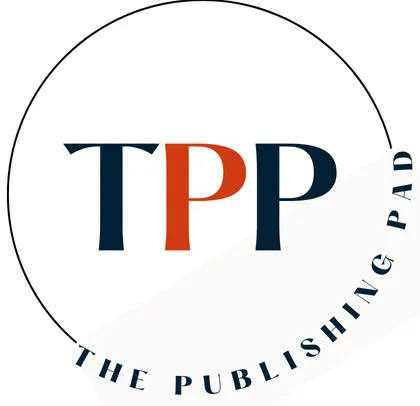Imagine This… You’ve Finished Your Book — But Nobody Knows You Exist
You’ve done it. After months (maybe years) of writing, rewriting, and editing, your manuscript is finally done. You hit that last period, take a deep breath, and then realize: Who’s actually going to read this? You don’t have an email list. Your social media following is mostly friends and family. You’re not sure what to post, let alone how to start “marketing” yourself.
This moment hits thousands of writers every year. And it’s not just unpublished authors; even seasoned writers can struggle with getting seen in a sea of content.
That’s why building an author platform isn’t just an option in 2025; it’s essential. Whether you want to land a publishing deal, grow a readership, or successfully self-publish, your platform is what connects you to your audience and opens the door to opportunity.
This guide will walk you through exactly how to build an author platform in 2025. You will find examples, tools, and tips that are actually tailored to writers and authors, not generic “influencer” advice.
What Is an Author Platform, And Why Writers Need One
An author platform is your total reach and visibility as a writer. It’s the collection of assets, tools, and touchpoints that allow you to connect with readers, agents, publishers, and the wider literary world. Think of it as the ecosystem around your writing career, that is, your website, email list, social media presence, audience trust, and online reputation.
It’s not about being famous. It’s about being findable, followable, and engaging to your ideal readers.
Even if you’re not planning to publish traditionally, a platform helps you:
- Build a community of loyal readers
- Launch your book with an existing audience
- Get podcast interviews, speaking gigs, or brand partnerships
- Stand out in a saturated market
Author Platform Examples That Actually Work
These three authors have built effective platforms using different mediums—newsletter, TikTok, and visual storytelling—with strategic and authentic approaches.
Example 1: George Saunders – Story Club (Substack)
George Saunders, the Booker Prize–winning novelist and acclaimed short-story writer, launched Story Club on Substack to extend his classroom-style storytelling beyond Syracuse University. He shares regular short-story craft tips, lessons, and interactive Q&As, building a community of writers and readers. His platform now reaches hundreds of thousands of subscribers and continues to grow.
- Why it works: It’s both educational and intimate: Saunders uses a mix of short stories, craft analysis, and comment interaction, effectively simulating an MFA-class experience online.
Example 2: Alex Aster – BookTok Sensation on TikTok
YA fantasy author Alex Aster went viral on TikTok promoting Lightlark. Her charismatic pitch videos and interactive polls garnered over a million views, launched her debut to New York Times bestseller status, and secured a film adaptation deal.
- Platform: @alex.aster on TikTok
- Why it works: Aster’s authentic, high-energy video content resonated with BookTok audiences, transforming social buzz into mainstream success, resulting in sales, bestseller lists, and media deals.
Example 3: Tyler Knott Gregson – Signal Fire (Website + Instagram + Substack)
Poet Tyler Knott Gregson engages over 350,000 followers on Instagram and maintains a popular Substack newsletter called Signal Fire, combining heartfelt poetry and essays
- Platform: Tyler Knott Website
- Why it works: His mix of visual poetry and personal storytelling connects deeply with his audience. Instagram draws attention, while his website and the newsletter nurture that interest, turning his casual readers into loyal followers.
These are very different approaches, but they have something in common: they’re intentional, aligned, and consistent. Your platform doesn’t have to look like anyone else’s; it just needs to be strategic and authentic.

Core Elements of an Author Platform (2025 Edition)
Now let’s break down the main building blocks of an author platform in 2025, what every writer, whether debut or multi-published, should consider.
1. Your Author Brand
Your brand isn’t just your logo or font. It’s your voice, tone, promise, and personality as an author. It’s how readers remember you.
Ask yourself:
- What genre(s) do I write?
- Who is my ideal reader?
- What emotions or values do I want to evoke?
🔍 Here’s a Pro Tip: Choose 3 brand “keywords” that define your vibe. (e.g., inspiring, honest, nerdy or dark, witty, smart). Use them as filters for all your content and messaging. Consistency across your website, social posts, and emails builds trust and recognizability.
2. Your Online Hub: Author Website or Blog
Your website is your home base. No matter what happens with social media, your website is yours, and that matters. It should include:
- A clear author bio
- Information about your books (published or upcoming)
- A blog or resource section (SEO helps here)
- Email sign-up (more on that next)
- Media/contact page for events or interviews
Whether you’re DIY-ing it or using professional help, a clean, mobile-friendly, and fast-loading site is non-negotiable in 2025.
💡 Where The Publishing Pad Can Help:
“At The Publishing Pad, we help writers create professional, genre-aligned author websites that not only look great but support long-term growth, even if you’re starting from scratch.”
3. Your Email List: The Most Valuable Asset You Can Build
An email list is more powerful than any social platform. Why? Because:
- You own your list (no algorithms).
- People check their email more consistently than social media.
- It builds a more personal connection.
Start early, even if you have just a few subscribers.
What to send:
- Monthly updates
- Behind-the-scenes writing updates
- Free content (e.g., short stories, tips)
- Book news, cover reveals, etc.
Lead magnet ideas:
- “First 3 chapters free [of your upcoming/published book]”
- “Writing prompt pack”
- “My top 5 favourite books in [your genre]”
You may use tools like Mailerlite, ConvertKit, or MailerSend. They’re beginner-friendly and affordable.
4. Your Visibility Channels
Choose 1–2 platforms to focus on (not all of them). Pick where your readers are, and where you enjoy creating.
Examples:
- Instagram: Great for fiction writers, visual content, and community.
- LinkedIn: Ideal for nonfiction or business writers.
- YouTube or Podcasting: Fantastic for deep dives and discoverability.
- Substack/Medium: For long-form content lovers
Consistency wins. Even one thoughtful post per week can make a difference over time.
🔧 Tip: Repurpose! One blog post can become a reel, a newsletter, and a Twitter thread.

Let’s Build Your Author Platform: Step-by-Step
Now that you understand what an author platform is and what it includes, it’s time to get practical. If you’re just starting or want to reboot your current efforts, this phase-by-phase breakdown will show you how to build an author platform from scratch, and do it in a way that aligns with your time, energy, and writing goals.
Phase 1: Lay the Foundation (Weeks 1–2)
Before anything else, set yourself up for success with a clear vision and essential tools.
Define Your Brand
Revisit your brand keywords and tone. Are you funny and raw? Professional and insightful? Romantic and dreamy? Your voice should guide everything, from your bio to your blog posts.
Claim Your Online Real Estate
- Reserve your domain (e.g., YourNameAuthor.com)
- Set up a basic website (Wix, Squarespace, or WordPress)
- Write a clear bio and upload a friendly, professional photo.
Set Up Your Email List
Start collecting emails early, even if it’s just friends and family to start. Use a free lead magnet to encourage sign-ups.

Phase 2: Choose Your Platform Channels (Weeks 3–4)
Pick 1–2 social or publishing channels based on where your readers are and what type of content you enjoy creating. Here’s a quick breakdown:
| Platform | Best For | Why Use It |
| YA, Romance, Fantasy | High engagement with readers and bookish creators | |
| Business, Nonfiction | Great for networking, thought leadership | |
| Substack | Literary Fiction, Memoir | Long-form content and direct reader connection |
| TikTok (BookTok) | Genre Fiction | Rapid discoverability with niche audiences |
| Medium | Nonfiction | Passive discovery via search and recommendations |
💬 Pro Tip: Join relevant writing communities to expand your network, e.g., Reddit’s r/selfpublish or genre-specific Facebook groups.
Phase 3: Create Content That Connects (Ongoing)
Consistency beats perfection. Plan a sustainable content rhythm (e.g., one blog post every two weeks, two Instagram posts per week).
Types of content to try:
- Mini blog posts sharing writing updates, book research, or lessons learned.
- Behind-the-scenes looks at your writing routine.
- Quotes or passages from your work-in-progress.
- Short educational videos about your genre or themes.
- Reader polls and Q&A sessions.
And remember: You don’t need to be everywhere, just show up where your audience is and be real.
Phase 4: Optimize and Grow (1–3 months in)
Once your platform is active, it’s time to grow and optimize it.
Growth Strategies:
- Collaborate with other authors (IG Lives, newsletter swaps, guest posts)
- Add SEO-optimized blog posts to your website targeting key phrases like:
- “how to write a mystery novel,”
- “best books for first-time authors.”
- Create backlinks by pitching guest articles to relevant sites like:
- Self-Publishing Advice from ALLi
- The Write Life

Avoid These Common Mistakes Writers Make
Even smart writers make these platform mistakes, but you don’t have to.
Waiting Until the Book Is Done
Start your platform while you’re still writing. It helps build anticipation and collect early interest.
Being on Too Many Platforms
Spreading yourself thin leads to burnout and inconsistency. Focus on what feels sustainable to start with.
Talking Only About Yourself
Yes, your platform is about you, but your content should help, entertain, or inspire your readers. Give them value in every post or email.
How The Publishing Pad Helps Writers Build Powerful Author Platforms
If you’re navigating your very first book or pivoting mid-career, The Publishing Pad offers tools, coaching, and resources that make platform-building less overwhelming and more strategic. From crafting your author bio to building a smart, SEO-friendly website, we’re here to help writers show up confidently and authentically.
Conclusion: Start Where You Are and Keep Showing Up
Building an author platform in 2025 isn’t about instant virality or chasing trends. It’s about showing up consistently and building trust with your readers over time. Start small, be authentic, and focus on the essentials. Don’t worry about being everywhere. Instead, worry about being you, clearly and consistently.
It’s never too early (or too late) to begin. If you’re unpublished or a seasoned author looking to reconnect with your audience, your platform is the bridge between your words and the world.
So, what’s the next step you’ll take to build your author platform?
FAQs: Building an Author Platform
What exactly is included in an author platform?
Your author platform includes your website, social media presence, email list, public visibility (like podcasts or guest posts), and the way readers engage with your content.
Do I need a platform if I’m not published yet?
Absolutely. In fact, building a platform before publication helps generate buzz, grow an email list, and demonstrate your audience to publishers.
How long does it take to build a good author platform?
It depends on your goals and consistency. You can lay a solid foundation in 30–60 days, but platform-building is an ongoing process.
Which platform is best for authors?
It depends on your genre and strengths. For example:
- Fiction authors often thrive on Instagram and TikTok.
- Nonfiction writers may do better on LinkedIn or Medium.
- Email remains the most effective universal tool for all authors.
Do I need a blog on my website?
No, but it helps. Regular blog content improves SEO, showcases your voice, and gives readers more reasons to visit your site and join your list.

